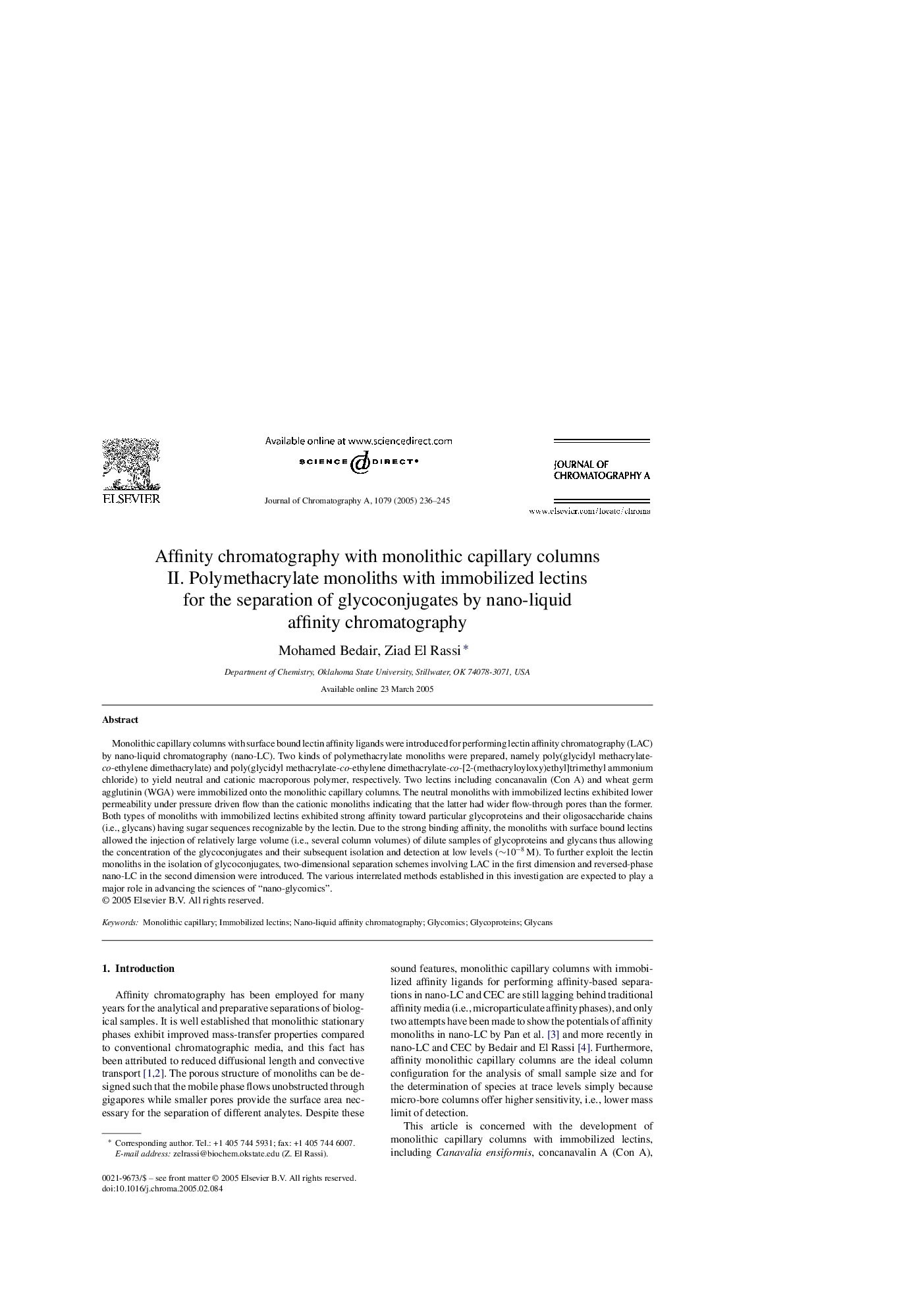| Article ID | Journal | Published Year | Pages | File Type |
|---|---|---|---|---|
| 9748960 | Journal of Chromatography A | 2005 | 10 Pages |
Abstract
Monolithic capillary columns with surface bound lectin affinity ligands were introduced for performing lectin affinity chromatography (LAC) by nano-liquid chromatography (nano-LC). Two kinds of polymethacrylate monoliths were prepared, namely poly(glycidyl methacrylate-co-ethylene dimethacrylate) and poly(glycidyl methacrylate-co-ethylene dimethacrylate-co-[2-(methacryloyloxy)ethyl]trimethyl ammonium chloride) to yield neutral and cationic macroporous polymer, respectively. Two lectins including concanavalin (Con A) and wheat germ agglutinin (WGA) were immobilized onto the monolithic capillary columns. The neutral monoliths with immobilized lectins exhibited lower permeability under pressure driven flow than the cationic monoliths indicating that the latter had wider flow-through pores than the former. Both types of monoliths with immobilized lectins exhibited strong affinity toward particular glycoproteins and their oligosaccharide chains (i.e., glycans) having sugar sequences recognizable by the lectin. Due to the strong binding affinity, the monoliths with surface bound lectins allowed the injection of relatively large volume (i.e., several column volumes) of dilute samples of glycoproteins and glycans thus allowing the concentration of the glycoconjugates and their subsequent isolation and detection at low levels (â¼10â8Â M). To further exploit the lectin monoliths in the isolation of glycoconjugates, two-dimensional separation schemes involving LAC in the first dimension and reversed-phase nano-LC in the second dimension were introduced. The various interrelated methods established in this investigation are expected to play a major role in advancing the sciences of “nano-glycomics”.
Related Topics
Physical Sciences and Engineering
Chemistry
Analytical Chemistry
Authors
Mohamed Bedair, Ziad El Rassi,
